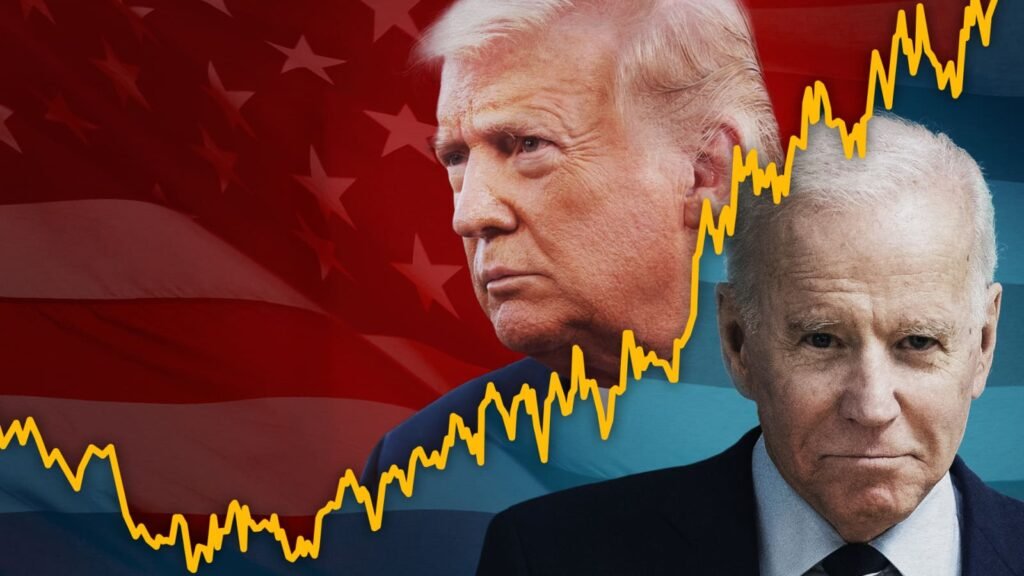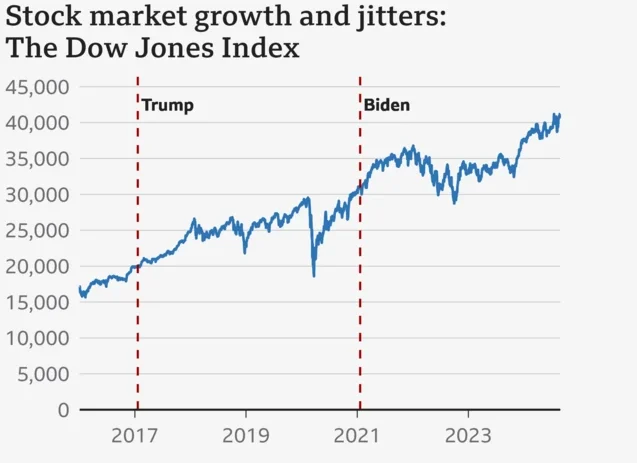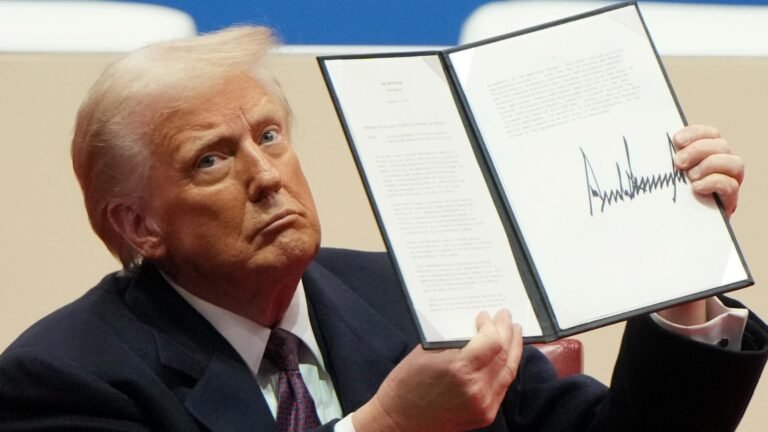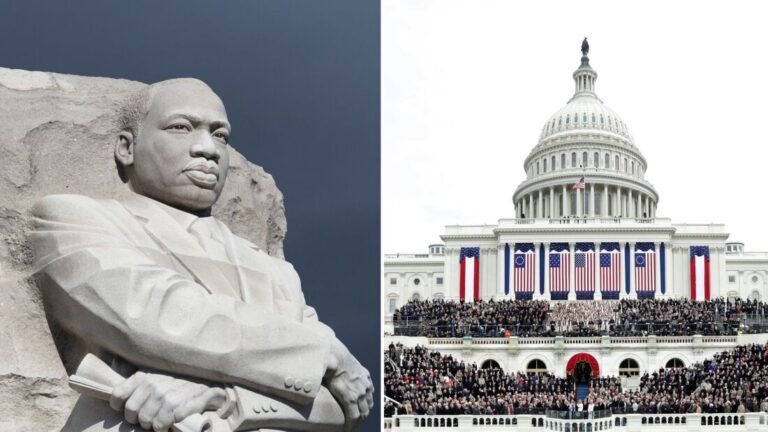
Biden vs. Trump: Who Was Better for the Stock Market?
WASHINGTON, D.C. — As President Joe Biden prepares to leave the White House, the stock market’s performance during his tenure has become a focal point of comparison with his predecessor, President Donald Trump. The debate over which administration had a more robust stock market is fueled by the numbers, historical context, and economic conditions that defined each presidency.
Stock Market Performance Under Biden
During President Biden’s term from January 2021 to January 2025, the S&P 500 rose over 55%, and the Nasdaq composite climbed nearly 46%. These gains were bolstered by significant rallies in 2023 and 2024, with back-to-back increases of 24% and 28% in the S&P 500, respectively. However, the early years of his presidency faced challenges, including a bear market in 2022 spurred by soaring inflation and aggressive Federal Reserve interest rate hikes.
The AI boom, catalyzed by the launch of ChatGPT in late 2022, helped revive the market, with tech stocks leading the charge. Despite this rebound, small-cap stocks struggled, with the Russell 2000 index climbing less than 1% during Biden’s tenure — the worst performance for the small-cap benchmark under any president.
Biden’s presidency ranked seventh among post-World War II presidents in terms of S&P 500 growth. While his term saw solid gains, it fell short of the record 84.5% increase in the S&P 500 during President Barack Obama’s first term.

Stock Market Performance Under Trump
President Trump’s four years in office (2017–2021) were marked by historic stock market gains. The Nasdaq composite surged 137.6% — the highest four-year increase for the index since its inception in 1971. The S&P 500 rose 67.3%, while the Dow Jones Industrial Average climbed more than 56%.
Trump’s presidency coincided with a period of tax cuts, deregulation, and record-low interest rates, which fueled corporate profits and market growth. His tenure ended with the onset of the COVID-19 pandemic, which briefly sent markets into freefall before a swift recovery began.
Election Cycle Gains
When measured between Election Days, Biden’s S&P 500 performance outpaced Trump’s, with a 70% increase compared to Trump’s 54.7%. However, Trump dominated in the Nasdaq, with a robust 111% gain compared to Biden’s 62.9%.
Historical Context and All-Time Records
Neither Biden nor Trump achieved the all-time best stock market performance during their terms. President Bill Clinton holds that distinction, with a 110.8% surge in the Dow Jones during his first term (1993–1997) and a 297.2% cumulative gain in the Nasdaq across his two terms.

President Barack Obama also delivered exceptional results, with an 84.5% increase in the S&P 500 and a 105.9% gain in the Russell 2000 during his first term, as markets rebounded from the Great Recession.
Factors Driving Market Performance
Market analysts agree that presidents have limited direct control over stock market movements. Economic trends, monetary policy, global events, and technological advancements often play a more significant role. Biden inherited a market already rebounding from COVID-19 lows, while Trump benefited from a strong pre-pandemic economy and a business-friendly policy environment.
“Presidents can influence sentiment and create policy environments that affect specific industries, but the broader market reflects economic realities beyond their control,” said Mark Henshaw, a senior market analyst.
As the U.S. prepares for its next presidential election, investors are keeping a close eye on the economic policies of the leading candidates. The next administration will inherit a market shaped by inflationary pressures, evolving technology trends, and global economic uncertainty.
While the Biden administration may not have matched Trump’s record-breaking Nasdaq performance or Obama’s post-recession gains, its tenure demonstrated resilience in the face of economic headwinds, leaving the stock market at near-record highs.
For voters and investors, the stock market’s performance under each president offers a lens through which to evaluate their economic leadership, even if it doesn’t tell the whole story.



